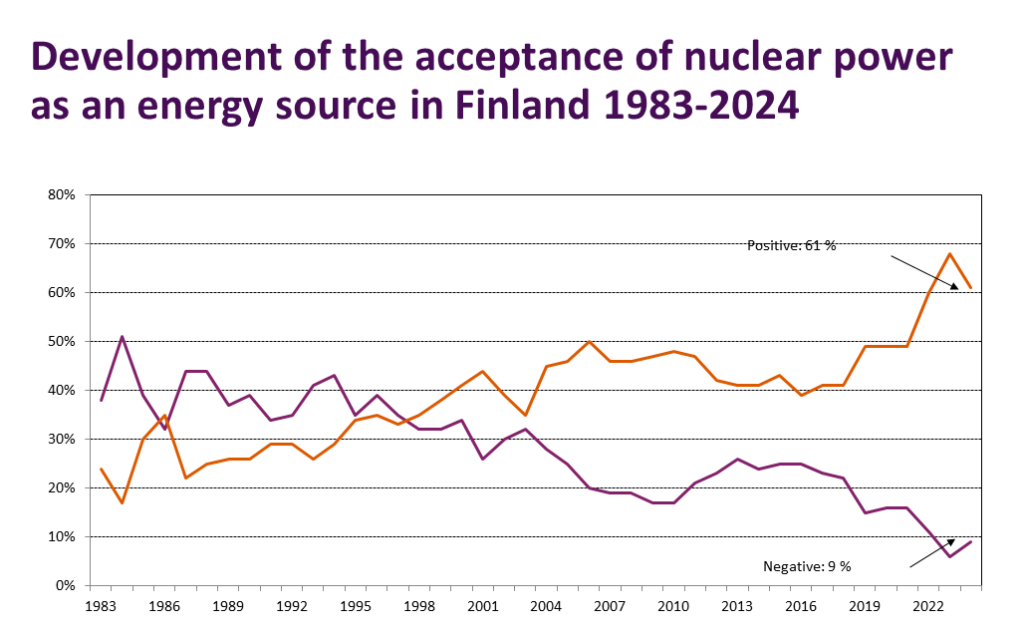Support For Nuclear Energy Remains Strong In Finland
The support for nuclear energy as a reliable and safe low-carbon source of energy remains high in Finland.
A new survey by Verian, commissioned by Finnish Energy, reports that 61 % of respondents are in favour of nuclear power and only 9 % against.
The current approval rating is the second highest ever, excluding the energy crisis winter of 2023.
Support for nuclear power in Finland has been measured since 1983 and the trend is strongly upward, as shown in the chart below.

(From Finnish Energy)
As Finnish Energy says, the results show that concerns about electricity prices have decreased with Olkiluoto-3 online, and more electricity generation being built. Strong support for nuclear power is important at a time when more clean electricity capacity is needed to reduce emissions from industry and transport and attract new industrial investment.
The role of nuclear energy has also been more widely recognised in Brussels, as reflected not only in the interest in new solutions such as Small Modular Reactors (SMRs), but also in the European Commission’s Communication on the EU’s 2040 climate target
says Jari Kostama, director of energy production at Finnish Energy (Energiateollisuus ry).
Read the full Finnish Energy Press Release.
Finland currently operates five reactors: two in Loviisa, and three in Olkiluoto. In 2022, before the newest unit Olkiluoto-3 began operating, the four reactors provided about a 35% share of electricity production.
In 2023, the Olkiluoto nuclear power plant produced a total of 24.67 TWh of low-carbon electricity, representing 31 % of the electricity consumed in Finland, while an ongoing investigation is looking into extending the operating licences for the OL-1 and OL-2 plant units and a potential power increase.
Furthermore, the Finnish Radiation and Nuclear Safety Authority (STUK) has also given a positive safety review for a proposed operating lifetime extension of the two-unit Loviisa nuclear power plant until 2050.
